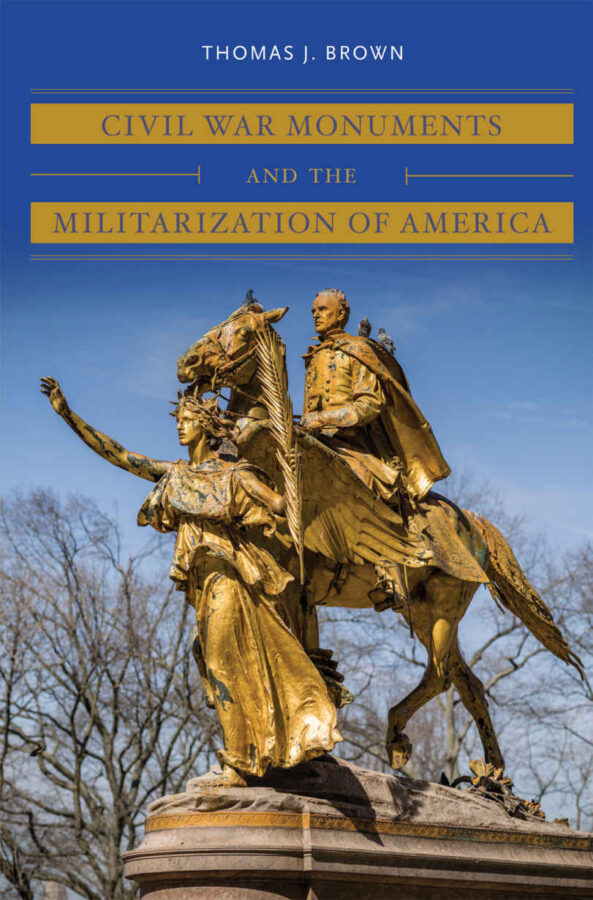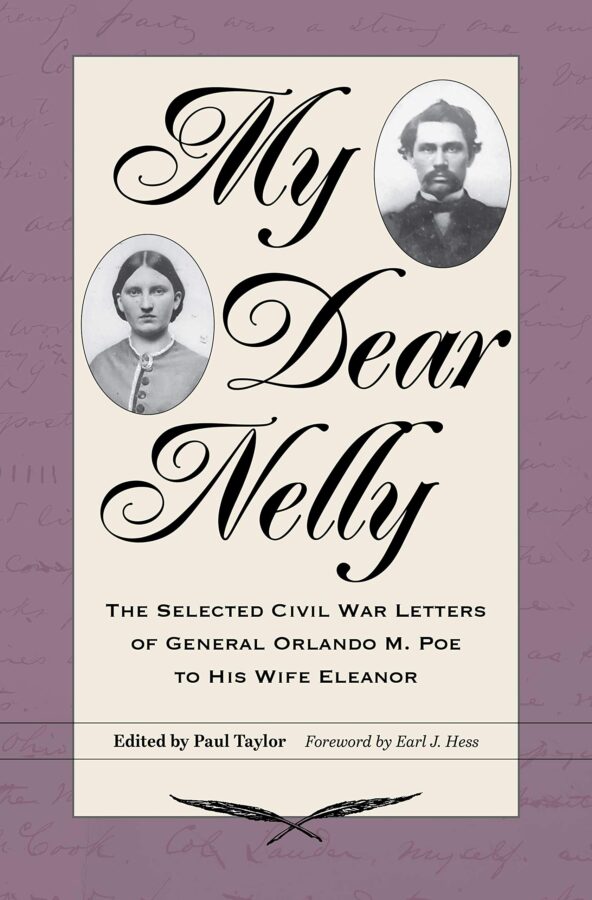Civil War Monuments and the Militarization of America by Thomas J. Brown. University of North Carolina Press, 2019. Paper, ISBN: 978-1469653747. $29.95.
 In many ways, the United States is a warrior nation. With bases across the globe and currently involved in multiple conflicts, it has a national anthem (officially adopted in 1931) that speaks of victory in combat. Citizens in military uniform are publicly revered. Compare the present with 1776, contends Thomas J. Brown, and a very different America appears. At that time, civilians were tearing down royal iconography and contesting martial supremacy. When a more perfect Union emerged, the law of the land mandated that the commander-in-chief be a civilian. The most trusted of leaders were those who cast aside their swords. How and when did this sea change occur, where a populace once skeptical of military power came to publicly embrace it? Brown argues that the shift came in the late nineteenth century, and through Civil War monuments.
In many ways, the United States is a warrior nation. With bases across the globe and currently involved in multiple conflicts, it has a national anthem (officially adopted in 1931) that speaks of victory in combat. Citizens in military uniform are publicly revered. Compare the present with 1776, contends Thomas J. Brown, and a very different America appears. At that time, civilians were tearing down royal iconography and contesting martial supremacy. When a more perfect Union emerged, the law of the land mandated that the commander-in-chief be a civilian. The most trusted of leaders were those who cast aside their swords. How and when did this sea change occur, where a populace once skeptical of military power came to publicly embrace it? Brown argues that the shift came in the late nineteenth century, and through Civil War monuments.
Assessing the medium from the 1860s through the Gilded Age and beyond, Brown produces one of the most comprehensive explorations on the subject to date. He appears to leave no stone nor bronze commemoration unturned, examining memorials from Spokane, Washington, to Bradenton, Florida, from modest bas reliefs to memorial halls. In many instances, Civil War Monuments confirms existing scholarship on the evolution of civic tributes, yet it does so in vivid detail. The volume’s strongest aspect is its rich and vast collection of origin stories. Brown walks us through the commission meetings and artists’ sketchbooks, unveiling how and why each tribute came to be, and how the form evolved from local, solemn homage to national declarations of bellicose, racialized power. Profoundly, the author demonstrates that despite lingering animosities, monuments North and South evolved in very similar ways.
The work begins with regimental and hometown memorials to the dead. Cenotaphs tallied the fallen, and statues were lone sentries standing in quiet contemplation. From there, Brown presents ample and unsettling evidence that public structures rather quickly shifted from messages of lament to emphases on martyrdom. Embodied by the willing flag-bearer, the ideal citizen was one that marched forth armed only with the regimental or national standard, showing overt motion and a willingness to die for the greater good. Stoic commanders astride fearless equine promoted social order and deference to authority (and showed who was beginning to take the lead in interpreting the war). Then came battle scenes, unimaginable immediately after the war, resplendent with muscular combatants and grandiose action.
Skillfully complicating the evolution story, the author consistently demonstrates that these militant depictions did not go unchallenged. Indeed, consensus rarely occurred, and the Vox Populi was almost never taken into account. Voices of outright protest often included the artists themselves, public intellectuals, and political progressives. Yet Brown shows how humanists increasingly lost ground to patricians, industrialists, and imperialists who had far deeper pockets. Telling are the amounts involved. As size and ornamentations increased, so did the price. Solemn memorials costing a few thousand dollars were suddenly deemed “inadequate,” and more grandiloquent behemoths often cost the equivalent of several million dollars today. Ironically, power brokers frequently overturned civic-minded proposals like memorial libraries, schools, meeting halls, and bridges by arguing that celebratory statues cost comparatively less.
Notably, Brown drives yet another nail in the coffin of the sectional reconciliation myth. Citing a litany of examples, he describes the few turn-of-the-century monuments depicting reunion, and the majority expressing righteous defiance. This was especially the case with the boom in “victory” statues. Those in the North represented Federal soldiers and Abraham Lincoln as the conquerors of treason and slavery, while Confederate versions proclaimed Anglo-Saxon victory over Reconstruction, racial mixing, and Progressivism. Surprisingly, the 1890s saw a greater number of victory monuments in the North.
It is here where the otherwise meticulous work overgeneralizes. Unlike the small project committees often broken down to their individual members, the veterans’ societies and their auxiliaries, with their many thousands of members, are often depicted as speaking and thinking in lockstep. If space and time were available, a more nuanced depiction would likely result, showing how leadership in these societies often consisted of the same ilk that dominated political and civilian monument commissions. Colonel James Martinus Schoonmaker, for example, was a leading figure in the GAR, who also happened to be a millionaire magnate in the coal and coke industry.
While this reviewer remains unconvinced that statuary and obelisks significantly influenced public attitudes towards combat and militarism, Civil War Monuments and the Militarization of America provides copious and compelling evidence that the creators of such tributes desired a subservient populace. Fearing the growth immigration, a rapidly expanding working class, and African Americans no longer in bondage, the old guard and nouveau riche alike pined for a world than bent to their will. Yet Brown makes it clear that the economic and social elites, like the general population before them, would also lose public control of the Civil War narrative.
Chilling and brilliant is the author’s conclusion. Into the new century, states and federal government took charge of Civil War iconography. Armed with taxpayer dollars, hawks and nationalists greatly expanded the size of the army and navy, established the Army War College, and repeatedly demonstrated American power in Central and South America and across the Pacific. To bolster their image, political leaders from both parties, from the North as well as the South, built ever-larger monuments to conformity, martyrdom, and warfare as the solutions to crises past and present. “Like other facets of American political history,” warns Brown, “Civil War monuments include inspiring achievements as well as tragic tendencies. Understanding of the national record should inform out continual revisiting of the civic landscape” (12).
Thomas R. Flagel is an associate professor of History at Columbia State Community College and the author of War, Memory, and the 1913 Gettysburg Reunion (2019).
